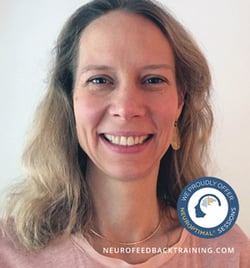As a parent, you want to do everything you can to help your child succeed in life. While academic success is important, it's equally crucial to teach your child essential de-stressing skills that will benefit them for years to come. One of these skills is mindfulness - the practice of being present in the moment, fully aware of one's thoughts, emotions, and surroundings. Mindfulness can help children develop self-control, self-regulation, and resilience, making it a valuable tool for navigating life's challenges. In this article, we'll explore the benefits of teaching mindfulness to children and provide you with tips, resources, and recommendations on how to incorporate mindfulness into your child's daily routine. Whether your child is dealing with ADHD, illness, or anxiety, or simply looking to improve their overall well-being, this guide will help you get started.

What is Mindfulness for Kids?
Mindfulness for kids involves teaching them to pay attention to their thoughts, emotions, and physical sensations without judgment. It's a powerful tool that can help children develop self-control, self-regulation, and resilience. Mindfulness can be practiced in a variety of ways, including meditation, breathing exercises, and sensory awareness activities.
How to Teach Your Child Mindfulness?
Teaching mindfulness to your child requires patience, creativity, and consistency. One of the easiest ways to start is by introducing them to mindful breathing exercises. For example, encourage your child to take slow, deep breaths and focus on the sensation of air moving in and out of their body. This helps them develop a sense of self-awareness and learn to regulate their emotions.
Another way to teach mindfulness to your child is to practice mindful listening. This involves asking your child to close their eyes and focus on the sounds around them, whether it's the sound of birds chirping or the hum of traffic. This activity helps children develop their sense of hearing and learn to focus on the present moment.
Three Tips For Teaching a Child MindfulnessWhen a parents bring their children to my Manhattan office to teach them to meditate I always ask the parent to stay for the instructions as well. I want to empower the parents to learn how they can lead short meditations at home. The techniques themselves are not challenging to learn, the key is assessing the individual child tolerance and being attuned to their readiness.
What age should children start meditating?
There is no right age to start meditating but it's an important factor in successfully introducing a child to meditation. because there is a “normal three year old or typical nine year old” but because there are important development milestones and markers that most parents (aka adults) don’t know about or don’t remember because it was SO long ago that we ourselves were children.
Many parents wonder what age is appropriate to start teaching their children to meditate. According to an evidence-based study published in the Journal of Child and Family Studies, children as young as four years old can benefit from mindfulness practices, including meditation. In fact, the study found that children who participated in a mindfulness program showed improvements in executive function, attention, and emotional regulation.
Every child is different. Being aware of your child’s age and stage can be so helpful. While it may be challenging for young children to sit still for an extended period of time, even short and simple meditation practices can be effective in promoting mindfulness and helping them develop valuable skills for self-regulation and emotional well-being. It's important to start slowly and make it fun for children by incorporating playful elements such as breathing exercises or visualization techniques.
What is the best length of time for a child to meditate?
A second important factor in helping a child learn to meditate is the length of the meditation session. Children under the age of eight or nine have very short attention spans.  We happen to live in a world, and in a culture especially, that asks a lot of young children. However, meditation doesn’t need to be one of those places.
We happen to live in a world, and in a culture especially, that asks a lot of young children. However, meditation doesn’t need to be one of those places.
One way to introduce children younger than eight to meditation is through games or challenges. Young children can mindfully still their body and listen to a ringing gong, usually for a minute or two.
It can be fun with one child or a group of children to play a game focused on stillness and quiet, but one must be realistic. Most five year olds I know can not sit for five minutes but they can be still and quiet for a minute or two.
What are the best techniques for meditation with a child?
When children experience mindfulness meditation, the focus should first be put on the mindfulness aspect, and not the meditation aspect. Mindfulness is the practice of being present and fully engaged in the now. It could be mindful of sensations such as taste or touch, or traditional objects like the breath. The key is not being distracted.
Formal sitting meditation (i.e. attention on the breath, labeling thoughts “thinking,” etc.) is best for older children, teens, and adults; however, younger children love to explore their bodies and their senses. So ask your child to really sit or really stretch or perhaps really dance! Mindfulness meditation activities involving I (listen to the gong or bell) and taste (chew and taste this M&M or salty pretzel) are big hits with young children. So get creative and have some fun! Children are under so much pressure these days and sitting practice or a mindfulness meditation at home or school doesn’t need to be one of those pressure places. The key is to just have fun and be present to each other!
How to Teach Mindfulness to ADHD Child for Self-Control?
Children with ADHD can benefit greatly from mindfulness practices. Teaching them to focus on their breath and pay attention to their thoughts and feelings can help them develop self-control and reduce impulsivity. Mindfulness practices like yoga and meditation can be particularly helpful for children with ADHD. Start with short practice sessions and gradually increase the length of time as your child becomes more comfortable with the practice.
How to Teach Your Child Self-Regulation and Mindfulness?
Self-regulation and mindfulness go hand in hand. Teaching your child to regulate their emotions and be present in the moment can help them develop resilience and cope with stress. One way to teach self-regulation and mindfulness is to practice gratitude. Encourage your child to focus on the things they're grateful for, such as their family, friends, or favorite activities. This helps them shift their focus to positive thoughts and emotions, and develops their sense of appreciation.
Best Book to Teach Child Focus and Mindfulness?
 Reading books about mindfulness can be a great way to introduce your child to the practice. One of the best books available is "Sitting Still Like a Frog" by Eline Snel. This book includes a CD with guided mindfulness exercises that parents and children can practice together. The book uses a playful approach to teach children how to be mindful and focus on the present moment.
Reading books about mindfulness can be a great way to introduce your child to the practice. One of the best books available is "Sitting Still Like a Frog" by Eline Snel. This book includes a CD with guided mindfulness exercises that parents and children can practice together. The book uses a playful approach to teach children how to be mindful and focus on the present moment.
"A Handful of Quiet: Happiness in Four Pebbles" is a children's book on mindfulness by Thich Nhat Hanh that teaches children how to connect with their inner selves through a simple meditation exercise involving four pebbles.
TED Talk on Why Teach Mindfulness to Kids?
If you're looking for inspiration to teach mindfulness to your child, watch the TED Talk "All It Takes is 10 Mindful Minutes" by Andy Puddicombe. In this talk, Puddicombe discusses the benefits of mindfulness and shares some tips on how to incorporate mindfulness into daily life. This talk can help you understand the importance of teaching mindfulness to your child and motivate you to make it a regular practice.
Teaching Children Mindfulness When They Have an Illness
Children who are dealing with illness or chronic pain can benefit greatly from mindfulness practices. Mindfulness can help them cope with their symptoms and develop resilience. One way to teach mindfulness to children with illnesses is to practice body scans. This involves focusing on each part of the body and paying attention to how it feels.
There are a lot of great resources online for learning how to teach your child a mindfulness of body practice. Here is a video example of teaching your child a body scan.
Teaching your child mindfulness is a powerful way to support their emotional and mental well-being. As you begin to introduce mindfulness practices, remember to be patient and creative, and above all, consistent. Making mindfulness a part of your family's routine can help make it a habit that sticks. Start small and gradually increase the amount of time spent practicing mindfulness. With time and dedication, you'll begin to see the benefits of mindfulness in your child's life, including increased self-awareness, self-control, and resilience.



